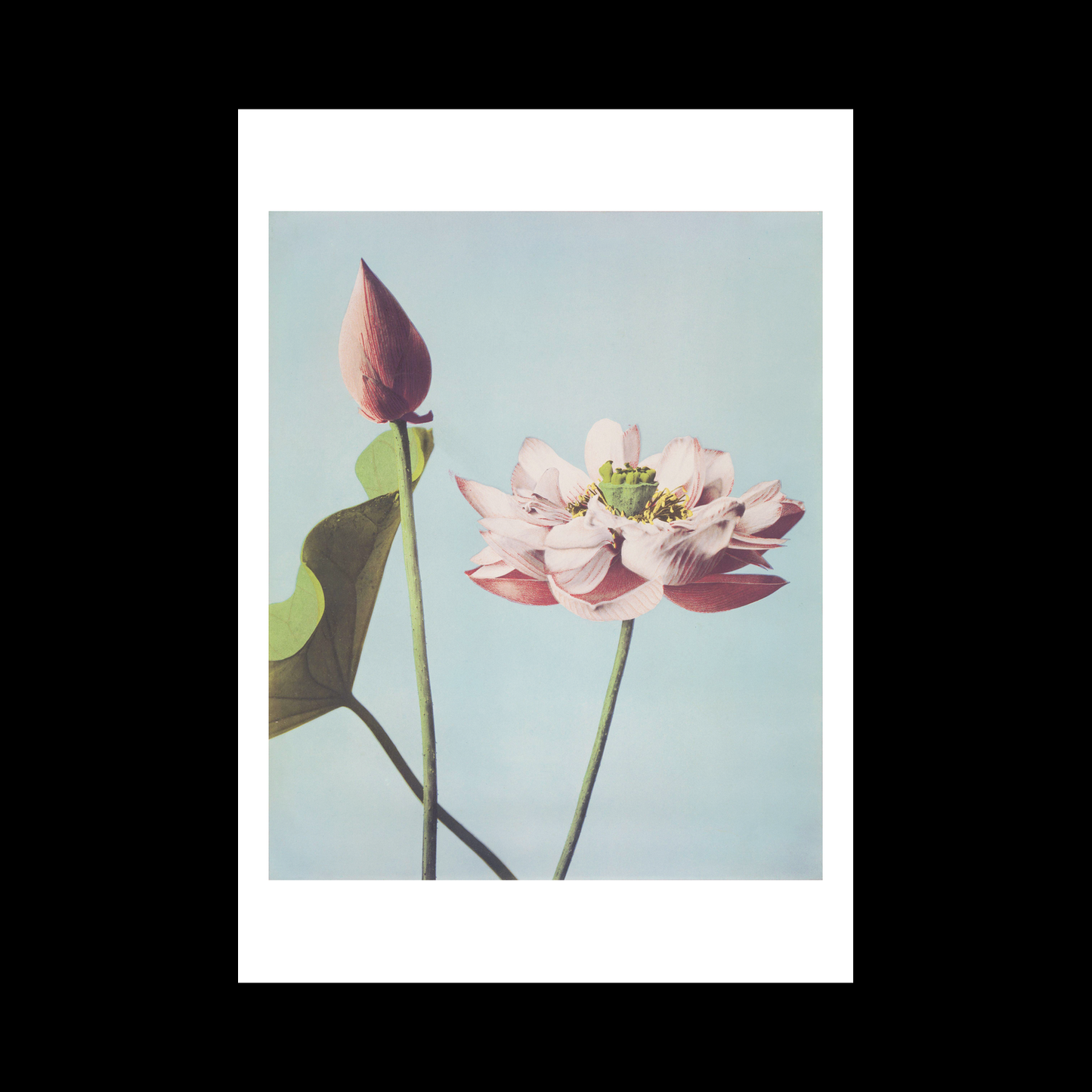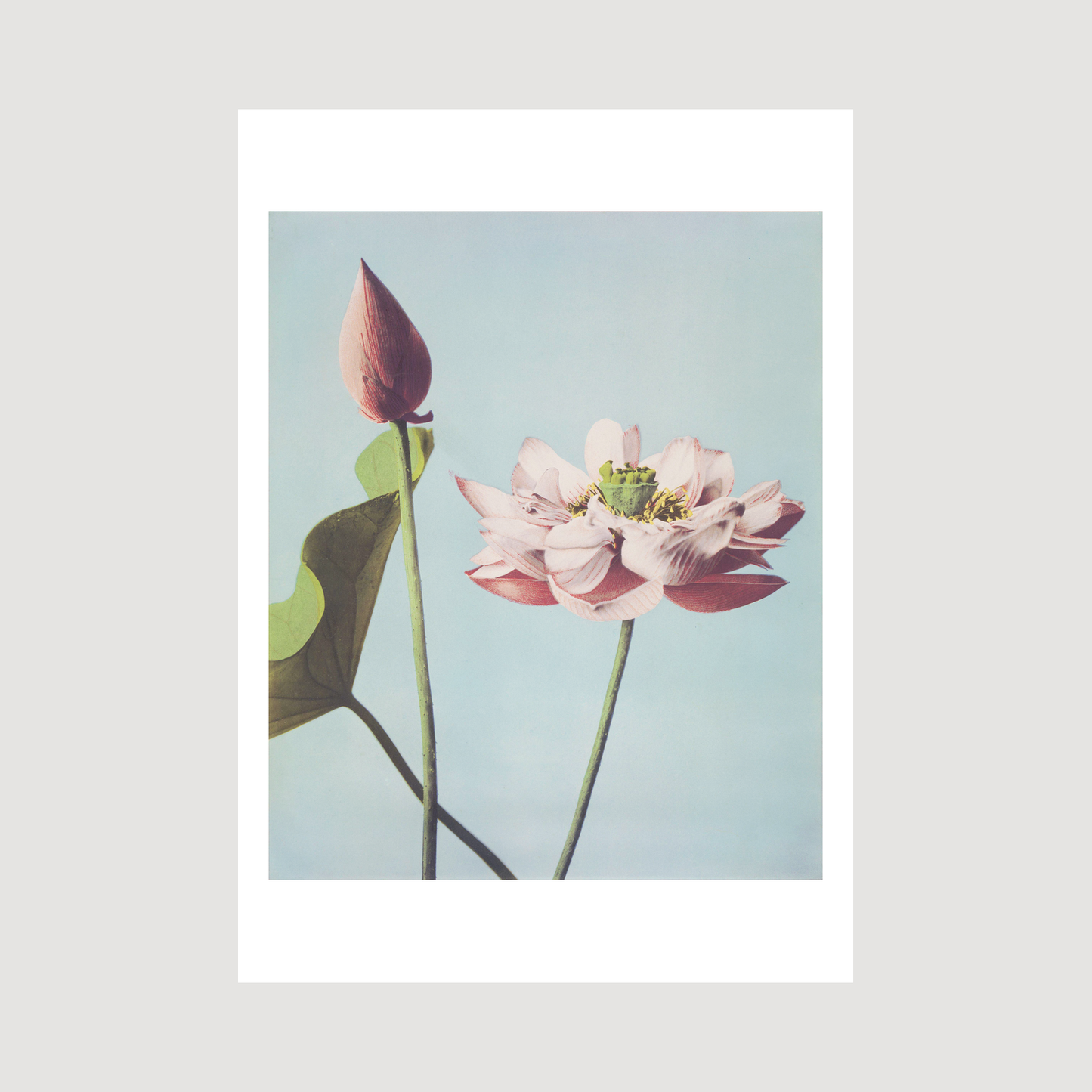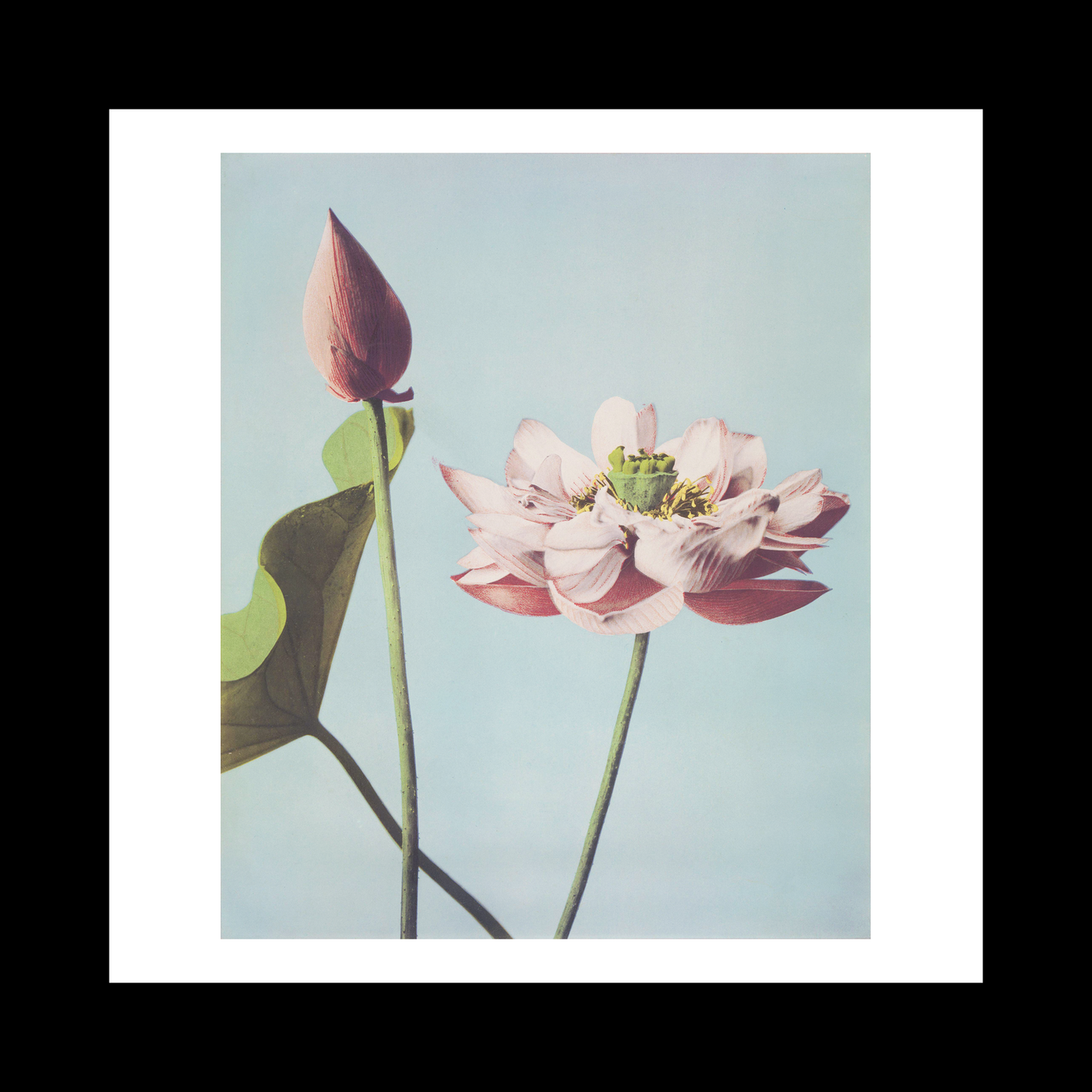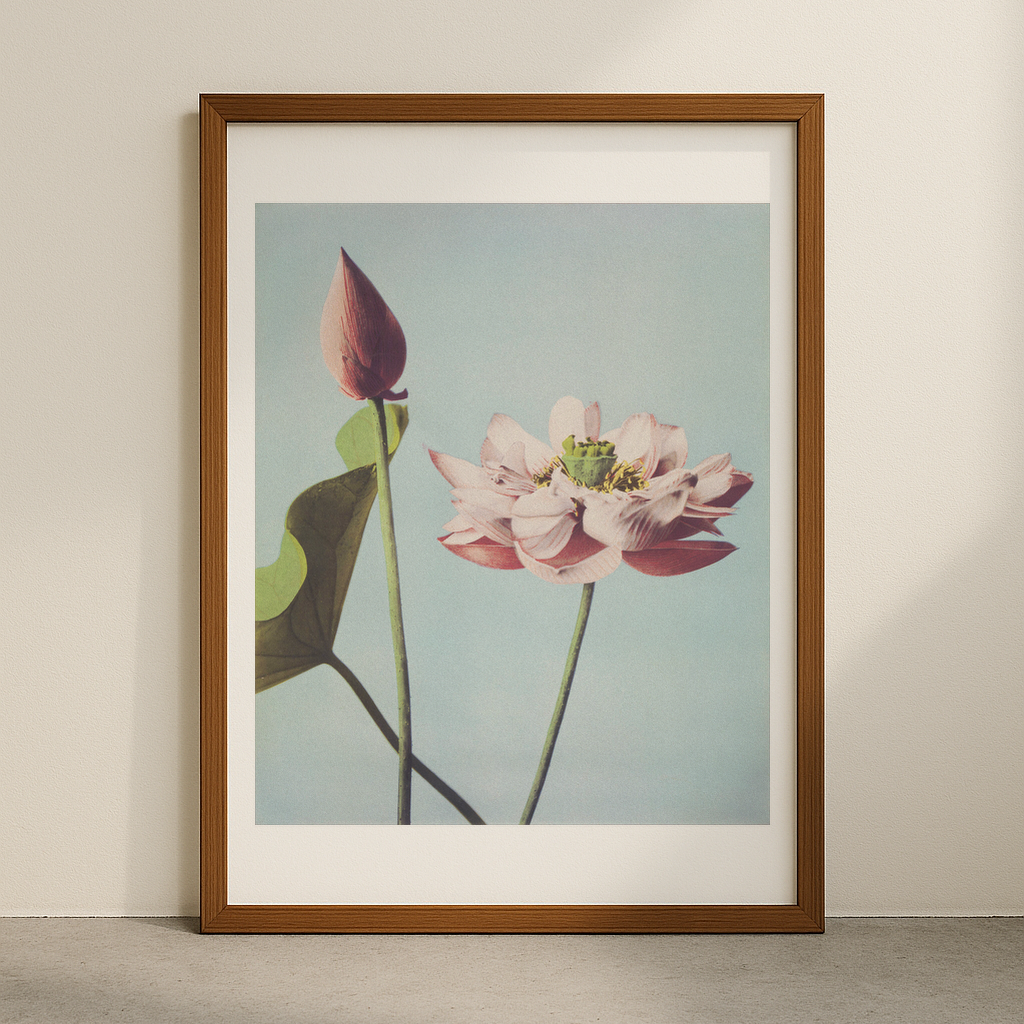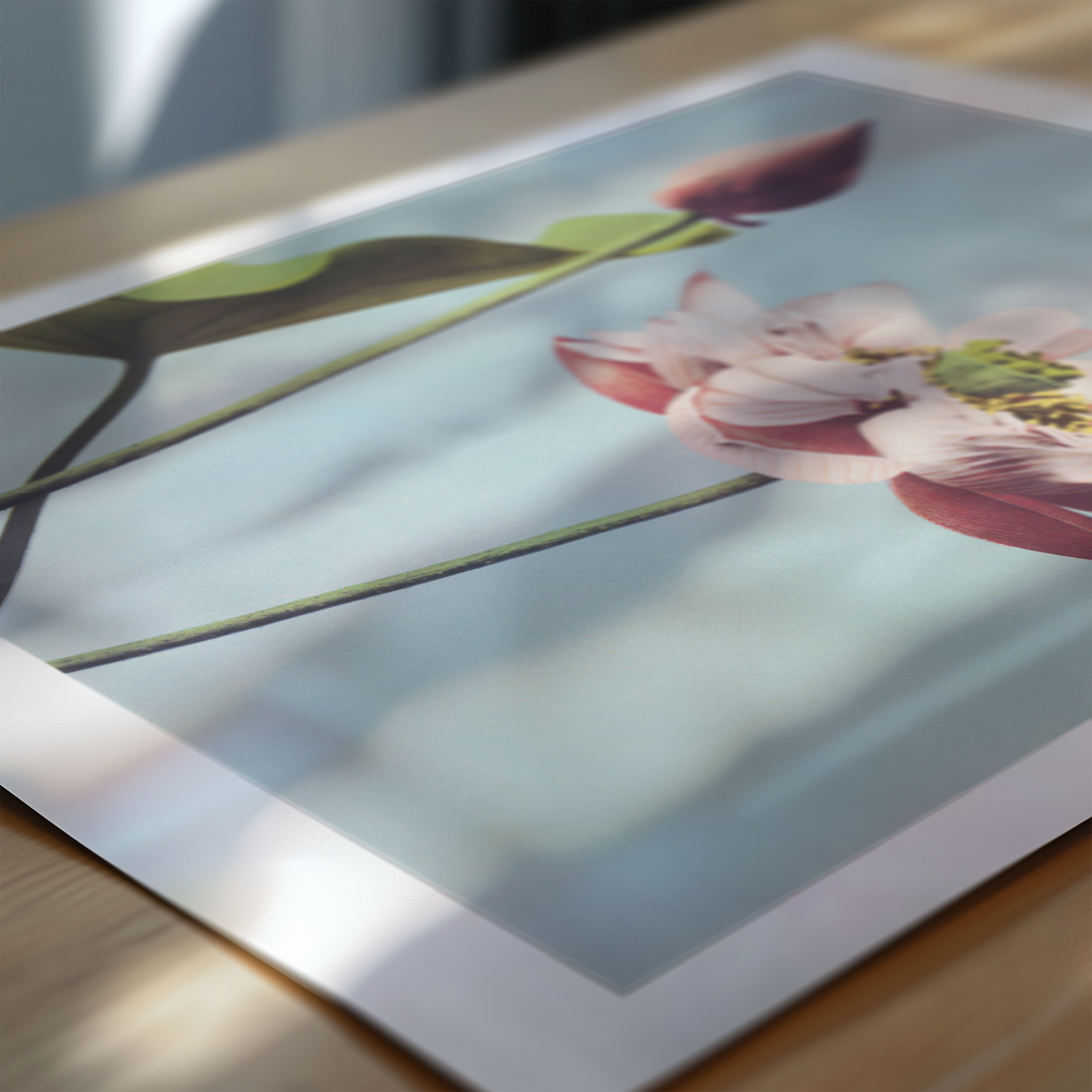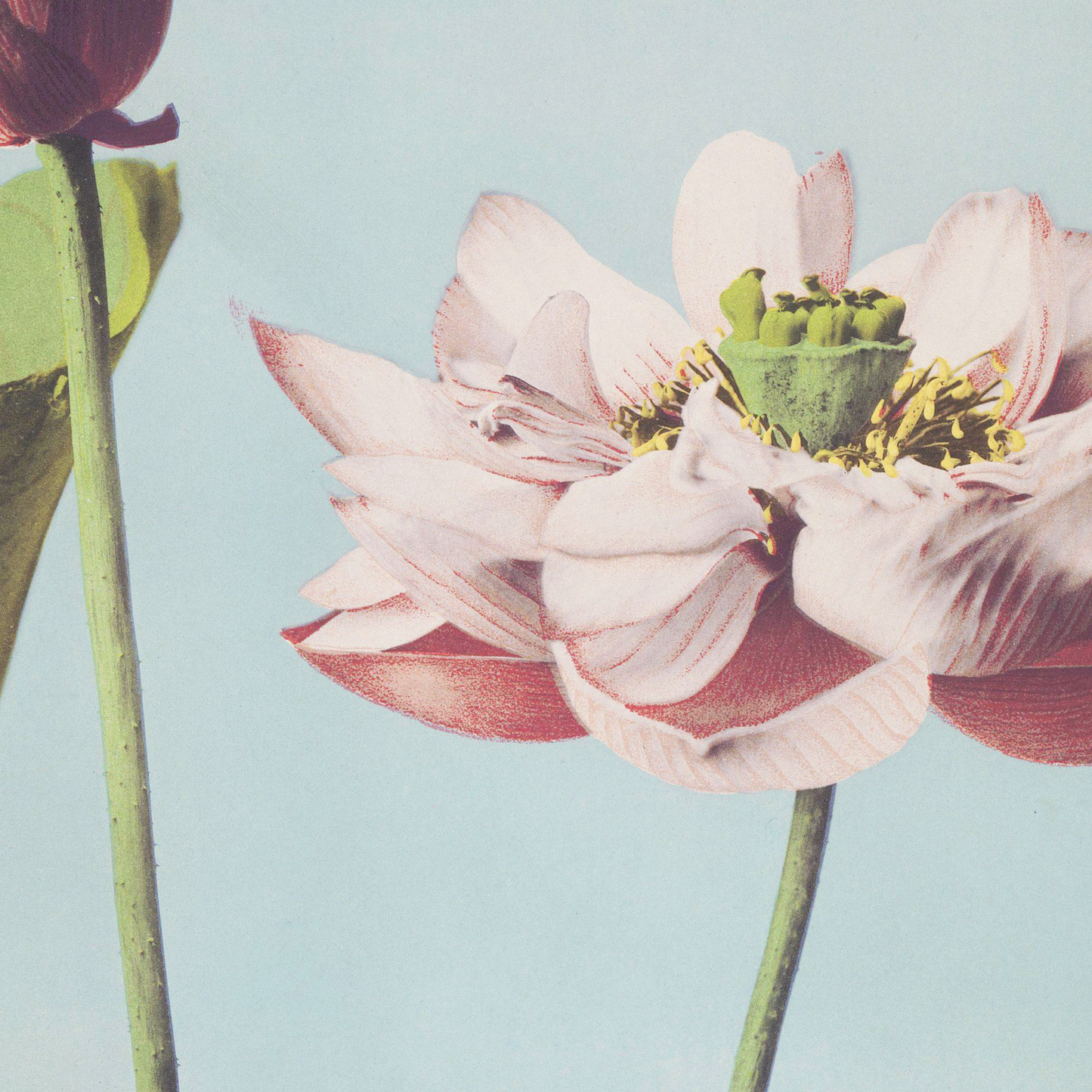1
/
of
6
Beautiful photomechanical prints Lotus Flowers
Beautiful photomechanical prints Lotus Flowers
Regular price
£12.45 GBP
Regular price
Sale price
£12.45 GBP
Taxes included.
Quantity
Couldn't load pickup availability
Ogawa Kazumasa's lotus flower prints (1887-1897) showcase the delicate marriage of traditional Japanese aesthetics with pioneering photomechanical techniques. These exquisite prints capture the lotus in various stages of bloom, from tight buds to fully opened flowers, displaying remarkable detail in both the petals' subtle gradations and the textural qualities of leaves and stems. The compositions demonstrate a masterful understanding of negative space, a principle deeply rooted in Japanese artistic tradition.
Kazumasa, often called the father of Japanese photography, revolutionised art reproduction in Japan during the Meiji period. His innovative use of collotype printing, a technique he learned while studying in America, allowed him to achieve unprecedented tonal richness in botanical illustrations. The lotus flowers, sacred in Buddhist symbolism, were chosen not just for their beauty but as a bridge between Japan's spiritual heritage and its rapid modernisation during this era.
The technical brilliance of these prints lies in their collotype process, which created subtle variations in tone that conventional photography of the time couldn't achieve. Kazumasa's studio in Tokyo became a hub for photographic innovation, where he trained numerous photographers and refined his printing techniques. These lotus prints exemplify his ability to blend Western technological advances with Japanese artistic sensibilities, creating works that influenced both botanical documentation and fine art photography. The pieces remain particularly noteworthy for their preservation of the lotus's translucent qualities and the careful attention to environmental elements like water reflections and ambient light.
View full details
Kazumasa, often called the father of Japanese photography, revolutionised art reproduction in Japan during the Meiji period. His innovative use of collotype printing, a technique he learned while studying in America, allowed him to achieve unprecedented tonal richness in botanical illustrations. The lotus flowers, sacred in Buddhist symbolism, were chosen not just for their beauty but as a bridge between Japan's spiritual heritage and its rapid modernisation during this era.
The technical brilliance of these prints lies in their collotype process, which created subtle variations in tone that conventional photography of the time couldn't achieve. Kazumasa's studio in Tokyo became a hub for photographic innovation, where he trained numerous photographers and refined his printing techniques. These lotus prints exemplify his ability to blend Western technological advances with Japanese artistic sensibilities, creating works that influenced both botanical documentation and fine art photography. The pieces remain particularly noteworthy for their preservation of the lotus's translucent qualities and the careful attention to environmental elements like water reflections and ambient light.
